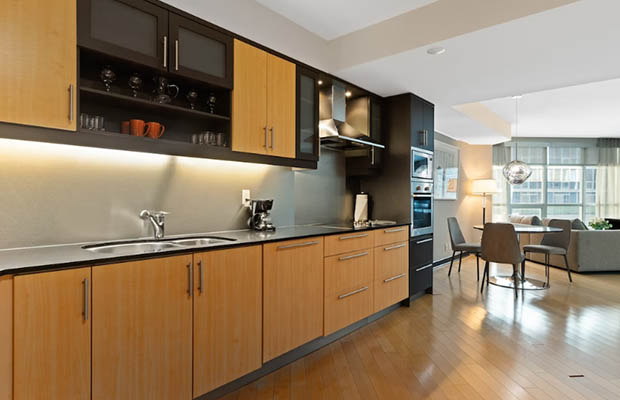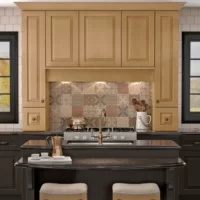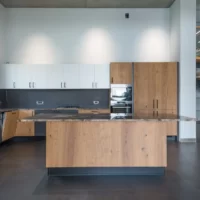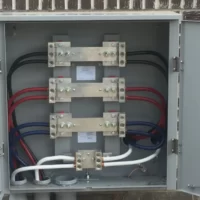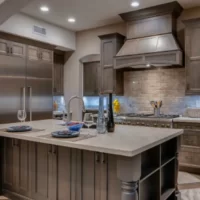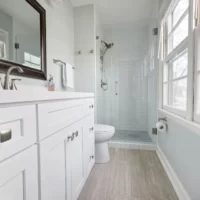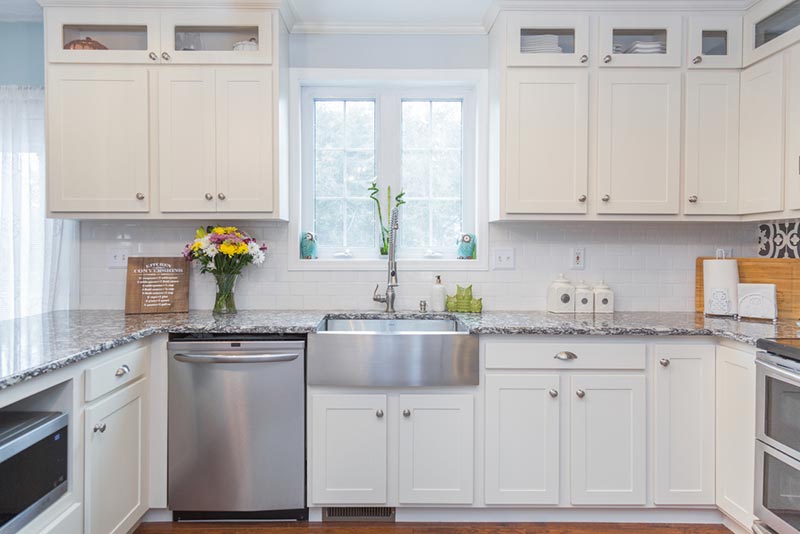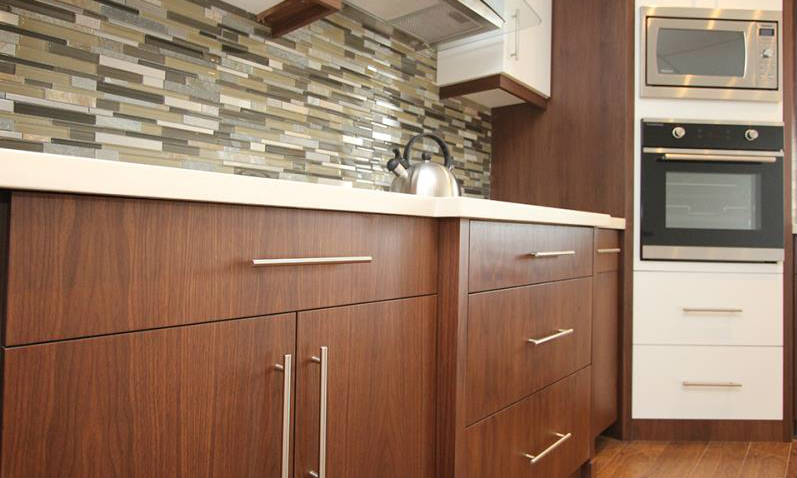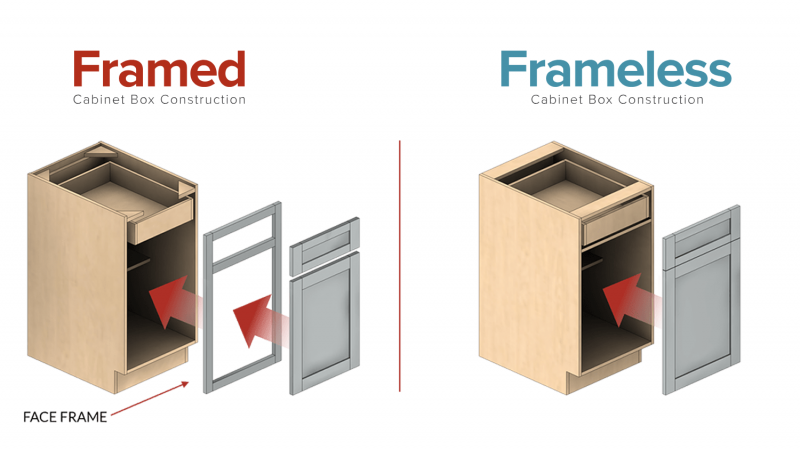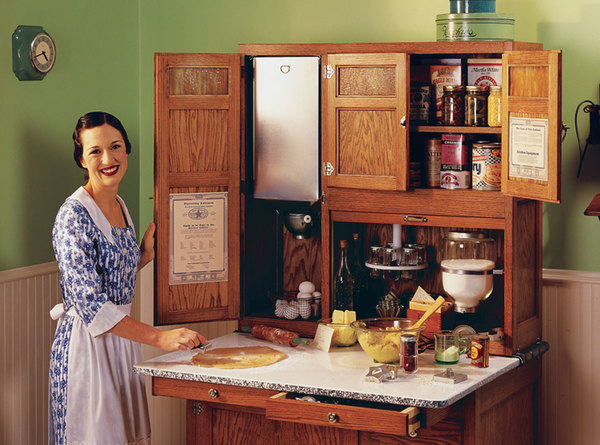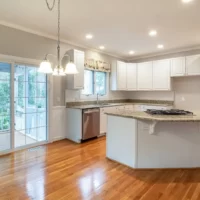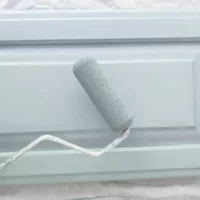To keep the doors in line and freely opening and closing, if your cabinets have adjustable concealed hinges, you might need to adjust them occasionally. Fortunately, if you know which screws to turn, this can be accomplished quickly and easily. By adjusting the cabinet hinges, a slight misalignment of the cabinet door can be quickly fixed. Read our article on how to adjust cabinet hinges.
Two Major Concerns With Cabinet Doors
The operation is obviously the most important factor, and with our two exclusive cabinet wholesalers, Fabuwood and Cliqstudios, you get the smoothest soft-close action available in a mass-produced cabinet. Visual alignment is the second matter of worry. Although it may seem like a minor detail, you’ll want your cabinet doors to be perfectly aligned when they are this beautiful. Additionally, improperly aligned cabinet door hinges can cause edge damage from other doors.
However, there is nothing to be concerned about. It’s really that simple; if you can put batteries in holiday toys and electronics, you can adjust the cabinet door hinges. You’ll need a #2 Phillips screwdriver to complete the task.
The Secret in The Cabinet Door Hinges
You only need to open any cabinet door and look for the hinges to access Blumotion cabinet door hinges from Blum, which are renowned for their gentle action, toughness, and simple adjustability. You can change three fundamental things.
- This modifies how the cabinet door rests when it is closed and how it slams against the face frame when it closes.
- This is mostly a visual alignment for doors in a long line, or in pairs. You can alter the height to make it match other doors.
- The adjustment that has the biggest impact on the smooth operation of your doors is right and left. By adjusting the upper, or lower hinge, or both hinges in tandem, you can tilt the door for alignment of the “reveal” (space between doors)
Adjustment hinges by Blum have threaded construction for stability and a simple turning design. After they are aligned, you should have no worries for many years to come, though rough, frequent, or jarring usage can cause them to move slightly.
Types of Adjustment
Horizontal Adjustment
This type of adjustment is the most typical and is frequently required to move adjacent doors closer or farther apart. You must adjust the hinge using the highlighted screw in order to change where the cabinet door rests. The majority of hinges will have a small trough here, allowing you to slide the hinge and door to the ideal position.
Vertical Adjustment
You can change the height positioning of your doors by adjusting the central screw in the small trough on this hinge. The door can easily be moved by simply adjusting the screw; tightening it to move the door up, and loosening it to move it down. While this adjustment is being made, there is no need to support the cabinet frontal.
Front And Back Adjustment
Additionally, you can adjust how far forward your cabinet frontals are positioned. The gap between the cabinet and door can be made equal on both the top and bottom by adjusting the screw shown here on both sets of hinges. It may be impossible for a frontal to open or close properly if it is placed too close to the cabinet.
How to Adjust Your Cabinet Door Hinges?
First, vertically adjust the hinges. You must do this by simultaneously loosening each hinge on the door. To move the door with some force in small increments, loosen the top and bottom vertical adjustment screws by one or two turns. If you don’t, the entire door may come loose, in which case you’ll need to find someone to hold the door in place while you screw it back on. Tighten each screw in the slotted holes once the door is in the proper position.
Next, move the hinges inward or outward. In order to correct this, move the hinge inwards or outwards depending on whether the door fouls the cabinet side when closing or if there is a significant gap between the door and the cabinet side when closed.
You align the door to its final position. You use the hinge’s front screw to accomplish this. Make minor adjustments to each hinge until the door is straight because this will need to be done in conjunction with the other hinges on the door. The top hinge must be turned outward (clockwise) and the bottom hinges inward (anti-clockwise) if the top edge of the door is too high. Adjust the top hinge inward (turn the screw counterclockwise) and the bottom hinges outward (turn the screw clockwise) if the top edge of the door is too low.


